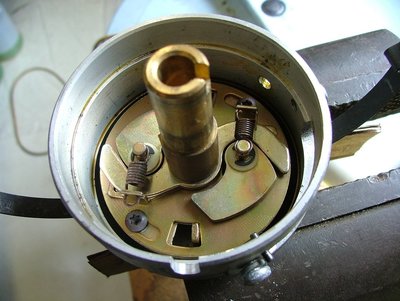TxDon
Well-Known Member
I posted this on my project thread without response so I hope to do better here. I am in the process of tuning the centrifugal advance curve on my 440 but have never attempted this before so I'm not real sure how to proceed. The distributor is a newer style MP electronic, very clean inside and out and looks like it has not had much use. I still have to open it up but can see it has the Mallory style adjustable centrifugal advance with the slotted plate and screws. I have searched here and other online sources and learned that this is adjusted using red plastic keys which I am in the process of getting. My first question is what is best way to expose the adjustable plate? Online I have seen to just pry off the reluctor with two screwdrivers, remove the screws around the outside of the housing and lift off the pickup plate - is there any more I need to know?
Once I expose the plate I understand that the adjustment process may be trial and error.
My engine has a mild cam, high rise intake and 750cfm Edelbrock and its a 4-speed car used exclusively on the street with 93 octane ethanol pump gas. Based on my research it appears that the 440 with a few mods likes less distributor advance and more initial with a total of 36 to 38 degrees. The distributor key settings range from 14 to 28 degrees in 2 degree increments. What would be the best setting to allow fine tuning with initial timing?
The other question has to do with the advance weight springs. I don't yet know what's on there but assuming I have the "factory" performance springs is changing them something I need to do? A number of sources have said a common mistake is using too light a spring and having the advance come in too early. What has your experience been with this distributor? Thanks for your help.
Once I expose the plate I understand that the adjustment process may be trial and error.
My engine has a mild cam, high rise intake and 750cfm Edelbrock and its a 4-speed car used exclusively on the street with 93 octane ethanol pump gas. Based on my research it appears that the 440 with a few mods likes less distributor advance and more initial with a total of 36 to 38 degrees. The distributor key settings range from 14 to 28 degrees in 2 degree increments. What would be the best setting to allow fine tuning with initial timing?
The other question has to do with the advance weight springs. I don't yet know what's on there but assuming I have the "factory" performance springs is changing them something I need to do? A number of sources have said a common mistake is using too light a spring and having the advance come in too early. What has your experience been with this distributor? Thanks for your help.

















